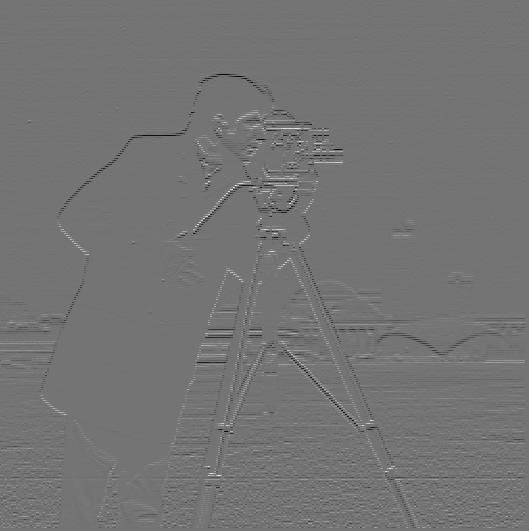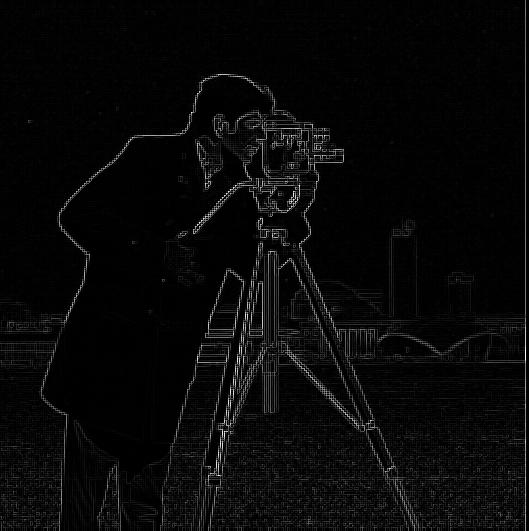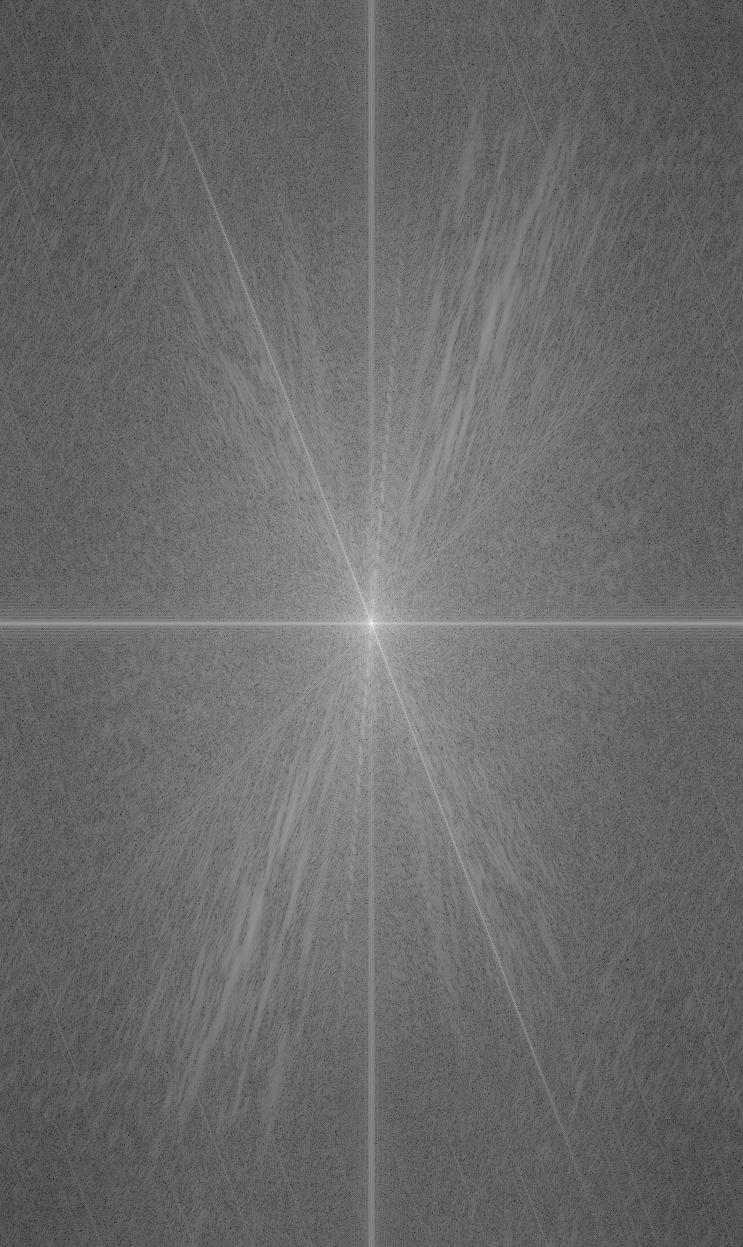CS 194-26: Project 2
By Ana Cismaru
Part 1: Fun with Filters
1.1 Finite Difference Operator
Filters have many usages including extracting edges, blurring, sharpening, etc. In this first part (1.1) we used the [1, -1] and [[1], [-1]] vectors
to extract the horizontal and vertical edges of an image of a camera man. We then calculated the gradient magnitude by taking the square root of the sum of the sqaures of the vertical and horizontal edge images. Finally, we set a threshold of 0.28 (determined experimentally) to binarize the image.)
 Vertical Edges (Dx)
Vertical Edges (Dx)
|
 Horizontal Edges (Dy)
Horizontal Edges (Dy)
|
 Magnitude of Gradient
Magnitude of Gradient
|
 Binarized Gradient
Binarized Gradient
|
1.2 Derivative of Gaussian Filter
We can improve our results by using the Derivative of the Gaussian to smooth the image prior to taking the derivatives.
We notice that by using a derivative of Gaussian Filter, we are able to extract smoother and more continuous edges.
This can both be done with two convolutions (dx, dy) or by combining the two into a single convolution with the gaussian.
 Vertical Edges (Dx)
Vertical Edges (Dx)
|
 Horizontal Edges (Dy)
Horizontal Edges (Dy)
|
 Magnitude of Gradient
Magnitude of Gradient
|
 Binarized Gradient
Binarized Gradient
|
 Derivative of Gaussian Image
Derivative of Gaussian Image
|
 Binarized Edges (similar to before)
Binarized Edges (similar to before)
|
Part 2: Fun with Frequencies
2.1 Sharpening
First we used a Laplacian filter to sharpen images. The Laplacian is the different between the original image and the image convolved with a Gaussian.
 Original Taj
Original Taj
|
 Sharpened with Alpha=0.5
Sharpened with Alpha=0.5
|
 Sharpened with Alpha=0.7
Sharpened with Alpha=0.7
|
 Sharpened with Alpha=1
Sharpened with Alpha=1
|
 Sharpened with Alpha=2
Sharpened with Alpha=2
|
 Original Blurry David
Original Blurry David
|
 lSharpened with Alpha=0.5
lSharpened with Alpha=0.5
|
 Sharpened with Alpha=0.7
Sharpened with Alpha=0.7
|
 Sharpened with Alpha=1
Sharpened with Alpha=1
|
 Sharpened with Alpha=2
Sharpened with Alpha=2
|
 Original Violinist
Original Violinist
|
 lSharpened with Alpha=0.5
lSharpened with Alpha=0.5
|
 Sharpened with Alpha=0.7
Sharpened with Alpha=0.7
|
 Sharpened with Alpha=1
Sharpened with Alpha=1
|
 Sharpened with Alpha=2
Sharpened with Alpha=2
|
2.2 Hybrid Images
By exploiting how our eyes process high and low frequencies at different distances, we can create hybrid images. The gist of the algorithm relies on
superimposing a high frequency filtered image over a low frequency filtered image. These images can be derived using the gaussian and laplacian filters. We can also extend this algorithm to colored images by applying it to every channel and stacking the results.
 Image 1
Image 1
|
 Image 1 Fourier
Image 1 Fourier
|
 Image 2
Image 2
|
 Image 2 Fourier
Image 2 Fourier
|
 Low Frequency Image
Low Frequency Image
|
 Low Frequency Image Fourier
Low Frequency Image Fourier
|
 High Frequency Image
High Frequency Image
|
 High Frequency Image Fourier
High Frequency Image Fourier
|
 Hybrid Image Close
Hybrid Image Close
|
 Hybrid Image Far
Hybrid Image Far
|
 Hybrid Image Fourier
Hybrid Image Fourier
|
 Hybrid Image in Color Close
Hybrid Image in Color Close
|
 Hybrid Image in Color Far
Hybrid Image in Color Far
|
 Alien Catcus Hybrid Close
Alien Catcus Hybrid Close
|
 Alien Catcus Hybrid Far
Alien Catcus Hybrid Far
|
 Failed Corgi Bread Hybrid Close
Failed Corgi Bread Hybrid Close
|
 Failed Corgi Bread Hybrid Far
Failed Corgi Bread Hybrid Far
|
MultiResolution Blending
We can seamlessly blend images by creating the laplacian stacks, masking the image at every stack level, and blending the image at every stack. Afterwards, we can sum the each level of the stack together to obtain the full blended picture.
 Grayscale Oraple
Grayscale Oraple
Laplacian Stack of the Oraple (Levels 1,2,4)
 A blursed mega professor
A blursed mega professor
 The Campanile takes over Stanfurd (not the cleaneast at the top due to the different colors :( )
The Campanile takes over Stanfurd (not the cleaneast at the top due to the different colors :( )
Most Important Thing Learned in Project
The most important/coolest thing I learned in this project is the power of separating images into different frequency levels and how optics/biology relates to that.
I really enjoyed getting to learn why the Mona Lisa looks like she is both smiling and serious and both looking at you and looking sideways.




























































